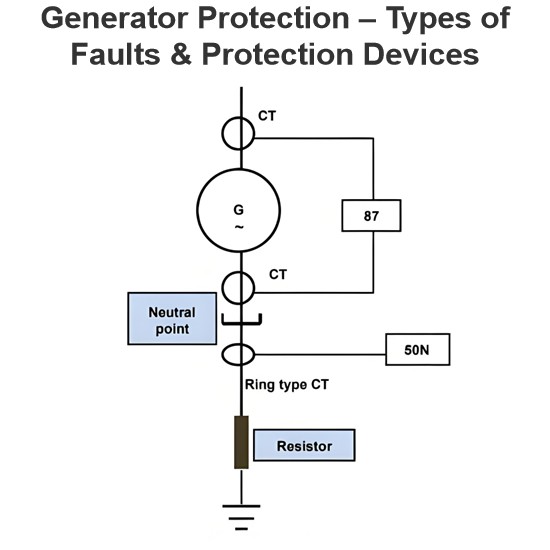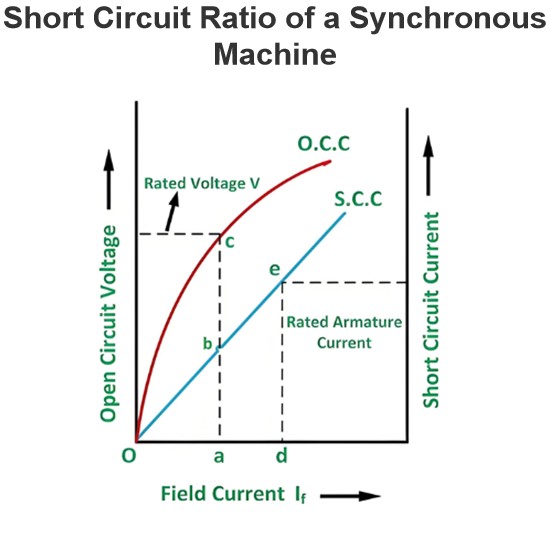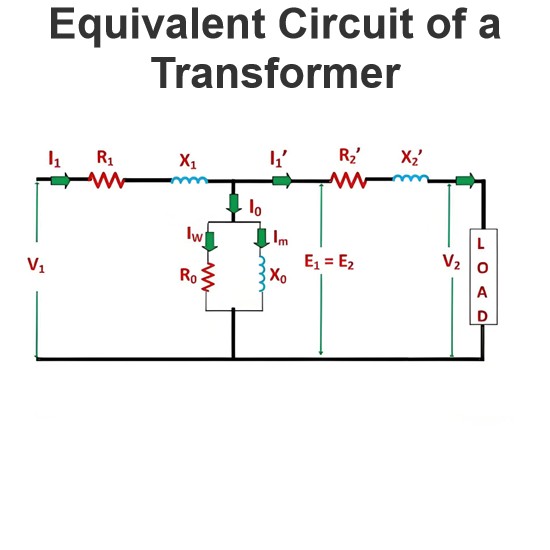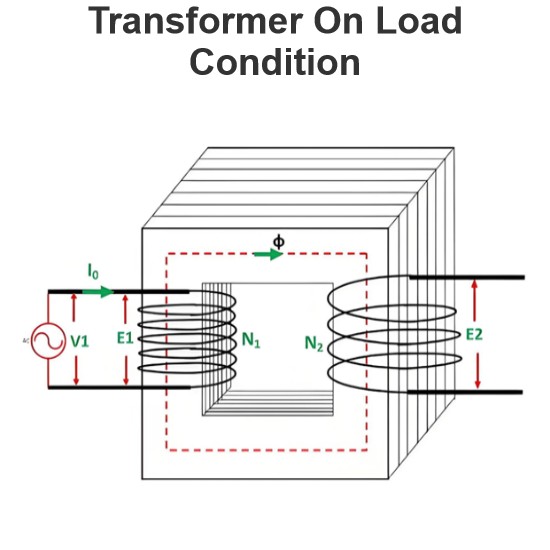Hunting in Synchronous Motor
Hunting in Synchronous Motor
Key learnings:
Hunting Defined: Hunting in a synchronous motor is the phenomenon where the rotor oscillates around a new equilibrium position due to sudden changes in load.
Causes of Hunting: Hunting can be caused by abrupt load changes, sudden field current adjustments, harmonic torque loads, or faults in the supply system.
Effects of Hunting: This instability may cause the motor to lose synchronism, induce mechanical stresses, increase losses, and elevate temperatures.
Reduction Techniques: To reduce hunting, use damper windings to oppose rotor slip and install flywheels to stabilize rotor speed.
Types of Synchronous Motor: Understanding different types of synchronous motors helps in selecting the right motor design to minimize hunting effects.
We encounter the term “HUNTING” in the context of three phase synchronous motor operations. It describes how the rotor must ‘hunt’ for a new equilibrium position following a sudden load application. This phenomenon is known as hunting in a synchronous motor. Let’s explore the equilibrium condition of a synchronous motor.
A steady state operation of synchronous motor is a condition of equilibrium in which the electromagnetic torque is equal and opposite to load torque. In steady state, rotor runs at synchronous speed thereby maintaining a constant value of torque angle (δ). If there is a sudden change in load torque, the equilibrium is disturbed and there is resulting torque which changes the speed of the motor.
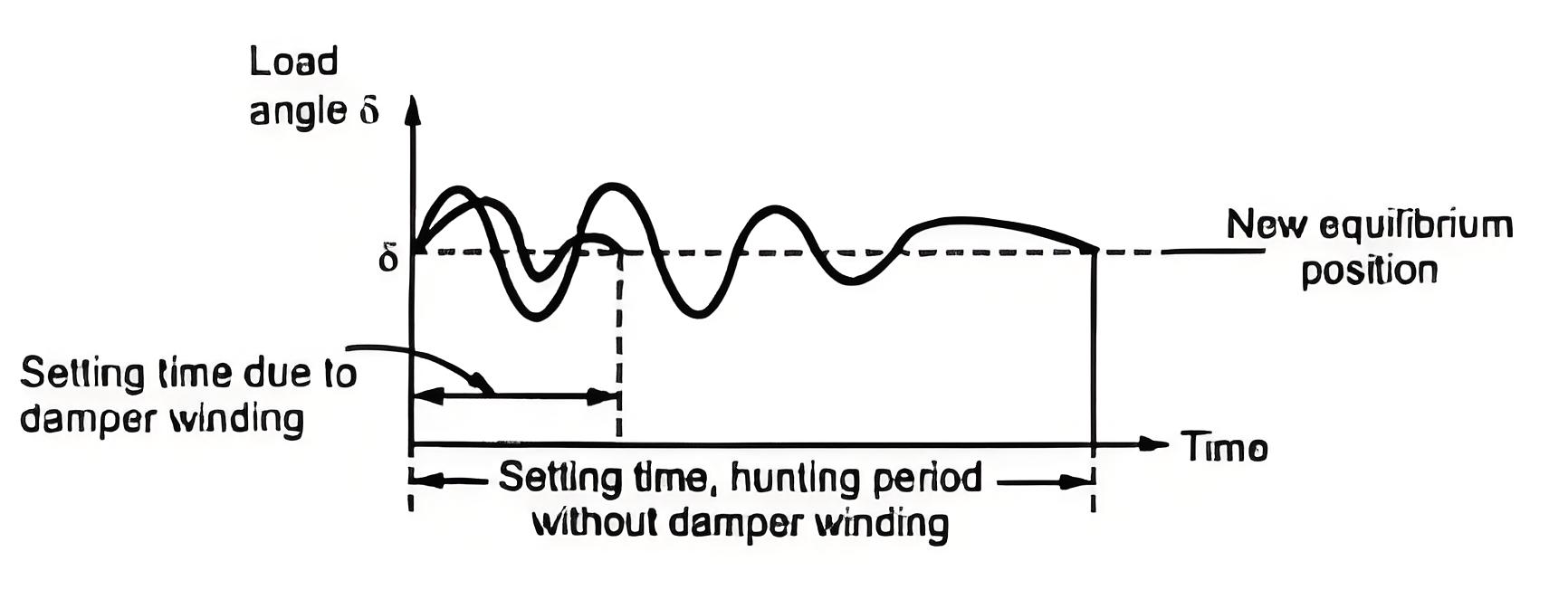
What is Hunting?
An unloaded synchronous machine starts with a zero-degree load angle. As the shaft load increases, so does the load angle. If a load, P1, is suddenly applied to an unloaded machine, the machine will momentarily slow down.
Additionally, the load angle (δ) increases from zero to δ1. Initially, the electrical power developed matches the mechanical load, P1. Since equilibrium isn’t reached, the rotor swings past δ1 to δ2, generating more electrical power than before.
The rotor reaches synchronous speed but doesn’t maintain it, accelerating beyond this speed. This acceleration causes the load angle to decrease, preventing the attainment of equilibrium once more.
Consequently, the rotor swings or oscillates around its new equilibrium position, a process known as hunting or phase swinging. Hunting occurs in both synchronous motors and generators when there’s an abrupt load change.
Causes of Hunting in Synchronous Motor
1. Sudden change in load.
2. Sudden change in field current.
3. A load containing harmonic torque.
4. Fault in supply system.
Effects of Hunting in Synchronous Motor
1. It may lead to loss of synchronism.
2. Produces mechanical stresses in the rotor shaft.
3. Increases machine losses and cause temperature rise.
4. Cause greater surges in current and power flow.
5. It increases possibility of resonance.
Reduction of Hunting in Synchronous Motor
Two techniques should be used to reduce hunting. These are –
• Use of Damper Winding: It consists of low electrical resistance copper / aluminum brush embedded in slots of pole faces in salient pole machine. Damper winding damps out hunting by producing torque opposite to slip of rotor. The magnitude of damping torque is proportional to the slip speed.
• Use of Flywheels: The prime mover is provided with a large and heavy flywheel. This increases the inertia of prime mover and helps in maintaining the rotor speed constant.
• Designing synchronous machine with suitable synchronizing power coefficients.
The Electricity Encyclopedia is dedicated to accelerating the dissemination and application of electricity knowledge and adding impetus to the development and innovation of the electricity industry.

